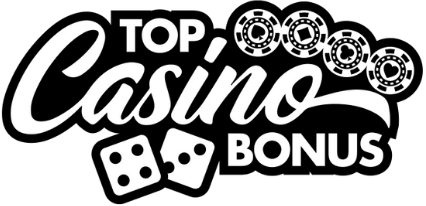A guide to understanding implied odds in poker
You can sit at a poker table with all the stats in the world tattooed on your forearm and still bleed chips if you miss the subtlety of implied odds. Most players think poker’s just about pot odds and tight play, but the real killers? They calculate value not just from what’s in the pot now, but from what’s likely to pour in later. That, my friend, is the art and science of implied odds.
Table of contents
Understanding pot odds vs. implied odds
Before you can grip implied odds with any finesse, you’ve got to have pot odds locked in muscle memory, like knowing when a screw’s been overtightened. Pot odds tell you what percentage of the pot you must call relative to what’s already in there. Straight math in the moment. If the pot’s $100 and it’ll cost you $25 to call, you’re getting 4-to-1 odds or needing 20% equity.
Why the pot doesn’t always speak the truth
Here’s the kicker: pot odds only take the current pot into account. But poker is rarely static. The real question is, what’s your opponent likely to invest if your hand gets there? That’s where implied odds stride in, allowing you to factor in future bets you stand to win. And if you’ve ever slow-played a hidden straight to hook an overpair, you know the power of that unseen value.
What implied odds really mean in action
Let’s say you’ve got a suited connector like 7♠8♠. The pot is $50, and your opponent bets $10. Pot odds say call if your odds of improving are better than 5-to-1. But if you hit your straight or flush, and you reckon he’ll ship in another $50, suddenly the math changes. Even if the pot doesn’t justify a call now, the anticipated payday might.
How to reliably read payoff potential
Spotting real implied odds is less about equations and more about opponent behavior. Is this player sticky with top pair? Do they pay off big river bets with mediocre hands? Sometimes experience lets you smell value before you even see the turn. I once felt confident calling a small bet with bottom pair because the guy across from me clutched his chips when bluffing. River came, I slow-played and doubled up, not just on pot odds, but implied intuition.
How stack sizes influence implied odds
Here’s a pitfall I’ve seen too many novices dive into: chasing draws against short stacks. If your opponent’s only got $30 left and the pot’s $100, there are barely any implied odds available. You can’t expect to squeeze juice from a dry stone. Big implied odds only live in deep-stack territory, where there’s room to maneuver and extract more value over later streets.
Controlling the narrative and shaping implied value
There’s a craft to setting up implied odds that most players overlook. It’s not just about reading the hand, it’s about telling a story that keeps your opponent comfortable enough to walk into your snare. To do this effectively, mastering when and how to apply pressure without scaring them off is crucial. Poker’s not won in cold numbers, but in heated exchanges of perception.
The role of semi-bluffing
Learning how to execute a semi-bluff in poker effectively is essential here. A well-timed semi-bluff doesn’t just build the pot, it convinces your opponent you’re strong early, priming them to call when the scare card hits and you actually connect. That’s not just strategy; that’s storytelling.
Counting invisible chips: how to measure implied odds
Now, implied odds aren’t pin-downable with dead-on precision like pot odds, but you can estimate. Ask yourself: if I hit my draw, how much more can I win? Multiply that number by the percentage chance you’ll hit to see if calling makes sense. If your draw’s got a 20% shot, and you think you can win 5x the call amount when you hit, that’s a go-ahead signal.
Quick fire checklist
- Know your outs, precise counts, not just gut feels.
- Gauge your opponent’s willingness to pay off.
- Assess relative stack sizes, deeper stacks = richer odds.
- Anticipate how the runout might scare or attract value.
You won’t always get it right. But over hundreds of hands, knowing when a call is profitable not just now but later will set you leagues apart from the numbers-only crowd.
The cost of misreading implied odds
Chasing bad implied odds is like repairing a leak by repainting the ceiling, it just doesn’t address the problem. One common mistake? Overvaluing implied odds in multiway pots, assuming everyone will hang on. Truth is, unless everyone’s got a piece of the flop, someone’s folding, and your future profit sinks with it.
Discipline over greed
I’ve folded open-ended straight draws more times than I care to remember, simply because the opponent had nothing left to pay with. No stack, no reward, just a mirage. Knowing when to walk away and when to invest is what separates grinders from gamblers.
Implied odds at online casinos and digital tables
Online play presents added wrinkles, faster games, less physical reads. But implied odds still play a vital role. The trick is adjusting to more predictable betting patterns and auto-sized bets. You’ll rely more heavily on timing tells and showdown history than table chatter or chip fidgeting.
If you’re playing real-money poker online, the method of banking you use has no impact on your odds, but it massively affects how smoothly you play. Whether you prefer the swift convenience of Skrill as a poker wallet, or the privacy of using Paysafecard for gaming deposits, your betting pace and ability to rebuy impacts your tactical edge.
Other players lean on mainstream solutions like PayPal for online poker, known for its robustness and ease of use. And if you’re playing from a mobile, even Pay by Phone poker methods deserve a look, just don’t let fast funding lead to loose calls without calculated equity.
Final thoughts: the wisdom behind the wager
Implied odds reflect more than just numbers, they encapsulate judgment, opponent psychology, and your own discipline. It’s an unspoken negotiation with future possibility. Learn to see beyond what’s in the pot and into what could be. Balance your math with your senses, and you’ll find value where others fold blindly or call foolishly.
And remember: poker isn’t just a game of chance, it’s a tapestry of calculated risk, deception, and, when played right, a conduit of profit painted with patience and precision.





0 Comments